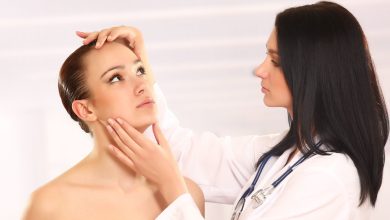Women are more prone to Rheumatoid Arthritis, know about it
Rheumatoid Arthritis

Arthritis is a common condition affecting people of all ages, genders, and activity levels. However, there are some unique challenges that women face when it comes to arthritis. Women are more likely to develop arthritis than men (one in four compared to one in five), and they often experience worse pain –aches in different joints – and are far more vulnerable to rheumatoid arthritis, one of the most debilitating forms of the condition.
Arthritis refers to a group of conditions that cause inflammation and pain in your joints. Age is one of the most significant risk factors for developing arthritis. There are over 100 different types of arthritis, each with its own set of symptoms and risk factors. Rheumatology is a medical specialty that focuses on diagnosing and treating arthritis.
There are two main types of arthritis:
- Osteoarthritis is a degenerative joint disease that affects millions of people worldwide. It is more common in women than men and can cause significant pain and disability. Although the exact cause of osteoarthritis is unknown, there are some risk factors that may increase your chances of developing the condition, such as aging, obesity, and previous joint injury.
2. Rheumatoid Arthritis affects different joints in women and men. Men tend to get more arthritis in their hip joints, while women are more likely to get it in their hands and knees. The reason for this difference is not fully understood, but it may be due to the different ways that men’s and women’s bodies are built. As we age, our bones and joints can become more vulnerable to injury and arthritis. For women, this is often due to wider hips affecting the alignment of the knees.
Inflammation is known to play a role in arthritis, and estrogen is thought to help keep inflammation in check. This may explain why younger women tend to have less arthritis than men. Arthritis is a common condition that affects millions of people worldwide. While the exact cause of arthritis is unknown, research has shown that there are certain risk factors that may increase one’s chances of developing the condition. One such factor is hormones.
While men and women are both susceptible to weight gain, it is more common for women to be obese. Excess weight puts pressure on the knee joints, slowly wearing away at the cartilage and raising the risk of arthritis. One pound of body weight is equivalent to three additional pounds of pressure on each knee joint, for example.
Arthritis is a condition that can affect both genders but is more likely to affect women. A woman whose mother has or had arthritis is likely to develop the problem at the same age and in the same joints.
Uses of this sarilumab injection-
Sarilumab injection uses is an effective medication to treat the symptoms of rheumatoid arthritis. It works by blocking certain proteins that play a role in inflammation and joint destruction, helping to reduce pain and swelling.
This medication is used directly into the body and can be taken either once or twice a month depending on individual needs. Studies indicate that this treatment may help improve physical function, and quality of life, as well as reduce morning stiffness associated with RA. Sarilumab injection may cause some side effects so it is important to discuss these potential risks before starting this treatment with your doctor.
Side effects of Sarilumab injection-
Sarilumab may increase your risk of infection and make it more difficult to identify. Symptoms include sore throat or fever, bruising, bleeding, or paleness. Please report these to your doctor or rheumatology nurse.
If any of these symptoms are severe, you should immediately discontinue taking a sarilumab injection and consult your physician. Sarilumab is available in two different potencies, so if you experience severe side effects, your dosage may need to be adjusted.
Conclusion-
Rheumatoid arthritis is the subsequent inflammation of the joints in the body parts due to hypersensitivity of the body immune cells in the joining areas region of the body




